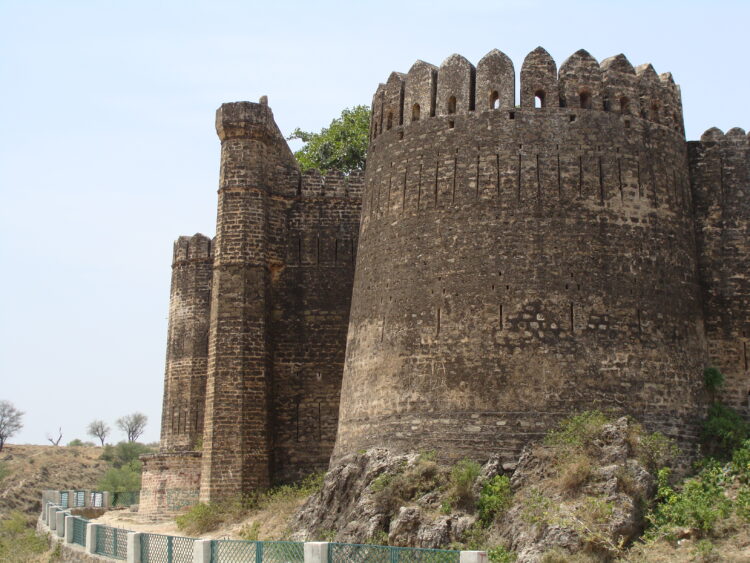
Sangni fortress or Sangni Killa, located about 29 km north of Gujar Khan town, is the most impressive and famous in the entire Gujar Khan Tehsil in Rawalpindi district.
Zulfiqar Ali Kalhoro
Pothohar is home to several forts and fortresses which are located at strategic locations, mostly overlooking rivers, rivulets and hill streams. Of these, the most prominent include the Rohtas Fort, Pharwala Fort, Rawat Fort, Attock Fort, Giri Fort, Sangni fortress, etc.
Sangni fortress or Sangni Killa which is located about 29 km north of Gujar Khan town, is the most impressive and famous in the entire Gujar Khan Tehsil in Rawalpindi district. It is easily approachable from Kallar Syedan town than Gujar Khan. It is located about 11 km east of Kallar Syedan town and 3 km east of Chakrali Budhal village in Gujar Khan Tehsil. The Sangni fortress, perched on a picturesque location overlooking two rivulets, is most spectacular.
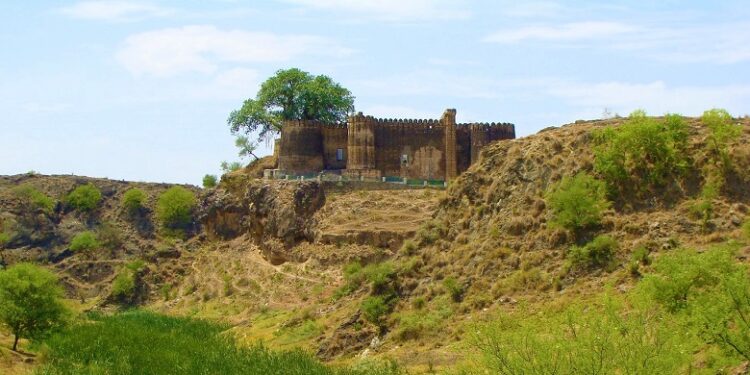
Who built this fortress? This is a question that everyone wants to know when one visits the fortress. Some believe that the Sangni fortress was built during Sikh rule in Punjab. Others believe that it was first built during the Mughal period and rebuilt by the Sikhs in the nineteenth century. I believe that it was first built by the Mughals, as one finds many Mughal-period sarais, baolis, fortresses and other monuments in Gujar Khan – with Pacca Khanpur (or Khanpur) Pacca being the most prominent Sarai in the tehsil. Some fortresses and Sarais were found in Manjotha and Palina villages, Gujar Khan and Mandra towns, etc. But most of these structures do not exist now and have completely disappeared.
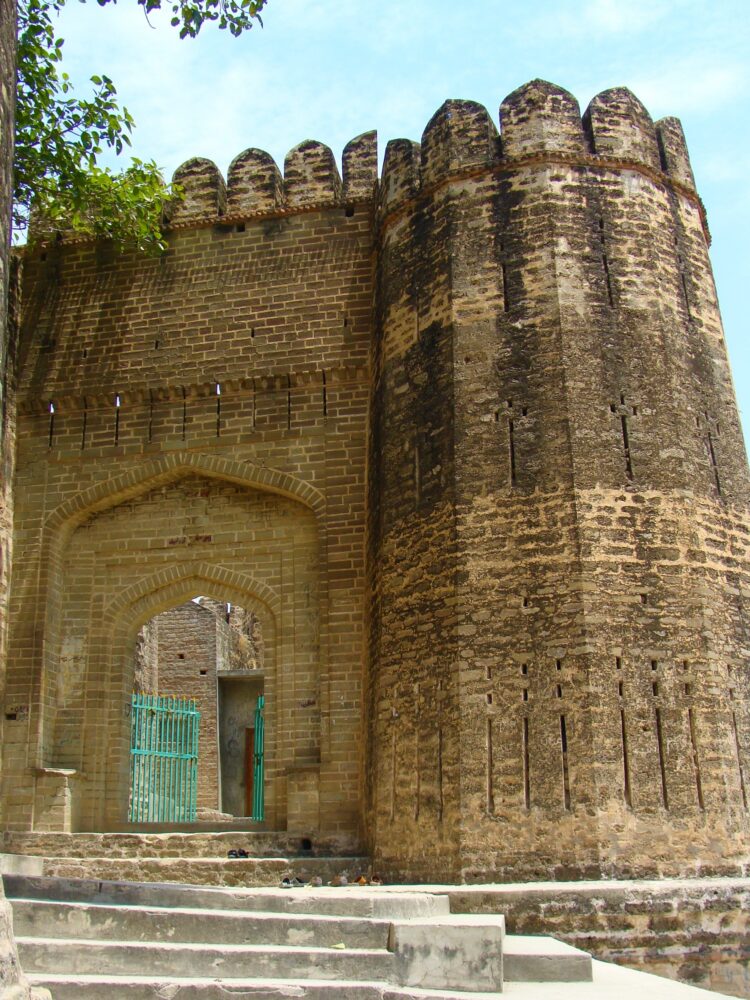
Some fortresses were also built during Sikh rule in Gujar Khan Tehsil. The most prominent was located at Sukho town which was believed to have been built by Baba Khem Singh Bedi (d.1905), one of the founders of the Singh Sabha movement. Baba Khem Singh Bedi had appointed Charmal Singh as its administrator. The Sukho fortress doesn’t exist now. It is now only preserved in the memories of the local community.
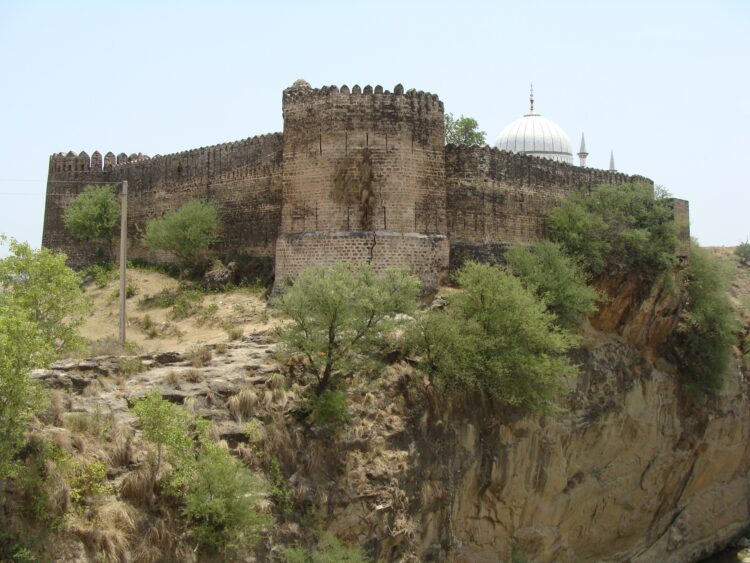
Sangni fortress was used for keeping prisoners during the Mughal period and later it was rebuilt by the Sikhs. It continued to serve as an important fortress of the Sikhs in the second quarter of the nineteenth century. Regarding the history of the Sangni fortress, some local historians and scholars have attempted to discuss its history. According to Ikram ul Haq Raja, the author of Tarikh–i-Gujar Khan that it was a mud fortress built by a Mughal ruler, and later on the instruction of Gulab Singh and Chatar Singh, the tehsildar of Beval in Gujar Khan rebuilt the fortress. The fortress was built between 1823 and 1825 on the confluence of two hill streams or rivulets, hence the word Sangni was derived from the word Sangam meaning the confluence of two rivulets which came to be known as Sangni over a period of time. The same information has been reproduced by Afzal Hasan Ansari in his book Nagar Nagar Gujar Khan.
Khan Bahadur Bandu Khan was made Faujdar of Sangni fortress by Chatar Singh. Khan Bahadur Bandu Khan was an eminent Faujdar who played an important role in the Second Anglo-Sikh War 1848-1849.
Sangni fortress is built over a hill from where one has a panoramic view of several villages, particularly Sui Cheemian, Dhok Las, etc. The Dhole Las village is noted as an 18th-century necropolis. These graves are constructed of Kanjur stone and possibly belong to some of the soldiers of the Mughal period who were stationed at the fortress. Similar graves can also be seen in the Takkal village with a dilapidated funerary enclosure, which possibly belongs to a Mughal administrator of Sangni and neighboring villages.
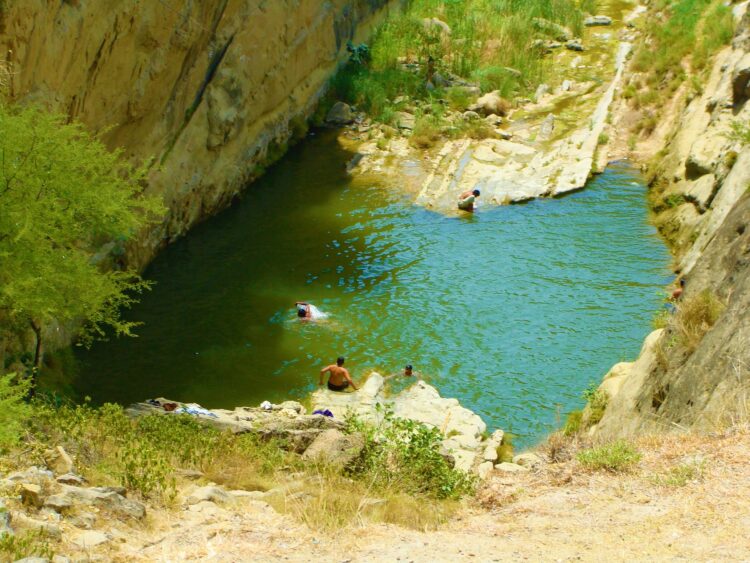
The main entrance gate of the fortress opens to the east from where one can see as far as the Takkal village, steps lead to the inside of the fortress.
The fortress has four bastions of almost equal diameter with stairways reaching the top of the bastions which were used for guarding the fortress and its surrounding area.
Located inside the fortress is the shrine of Sahibzada Abdul Hakeem alias Cheeray Wali Sarkar whose ancestors are believed to have come from Arabia via Iran to preach in Chakrali Budhal in Gujar Khan Tehsil. He was a deputy of Haji Murid Khan (1785-6) alias Baga Sher whose shrine is located at Darkali Sharif in Kallar Syedan tehsil in Rawalpindi district. Haji Murid Khan was from a Gakhar tribe and was a deputy of Pira Shah Ghazi Qalandar Damri Wali Sarkar (d.1742) whose shrine is located at Khari Sharif in Mirpur district in Azad Kashmir.
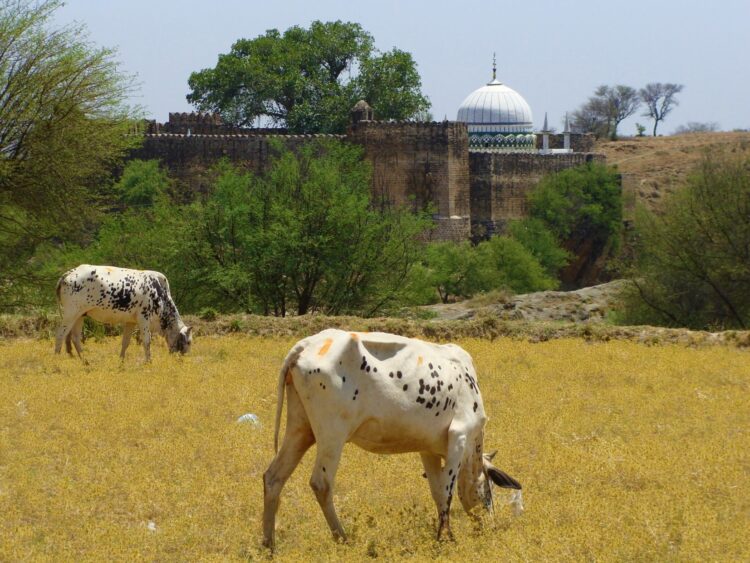
It is believed that Sahibzada Abdul Hakeem first meditated at Sangni fortress, which was then simply made of unbaked bricks. At that time, this area was under Sikh rule. The local administrator and ruler Gulab Singh decided to rebuild the fortress. It is believed that they sought permission from Sahibzada Abdul Hakeem to rebuild the fortress! Sahibzada Abdul Hakeem allowed them to rebuild the fortress and told them that it belonged to him and he would visit and mediate whenever he wished to do. The construction of the fortress began. He left the fortress for Chakrali Budhal as he got disturbed due to construction activity which hampered his mediation and prayers. He made Chakrali his permanent seat of preaching, from where his name spread to villages all over the Pothohar region until he died in Chakrali and was buried there.
A detailed hagiography of Sahibzada Abdul Hakeem has been discussed in Tazkira Muqimi by Mian Muhammad Bakhsh (d. 1907).
According to a legend, 60 years after the death of Sahibzada Abdul Hakeem, some people had seen the saint in their dreams, in which he ordered his disciples to take his mortal remains to the Sangni fortress. Accordingly, his mortal remains were taken for reburial to Sangni Sharif, where, today, his tomb stands at the centre of the fortress. Soon, Sangni with the blessings of Sahibzada Abdul Hakeem became to be known as Sangni Sharif.
A fabulous specimen of Pothohar architecture, the tomb is said to have been built by his devotees and descendants over his grave.
It has three arched-entrances from all directions. The tomb is constructed of burnt bricks and adorned with ceramics. The hemispherical dome rests on the square building, the corners of which are decorated with four minarets.
The drum on which the dome rests is adorned with glazed tiles. Close to the shrine is situated a mosque, which was also built by disciples of Sahibzada Abdul Hakeem.
The walls of the corridor are decorated with modern ceramics. The interior of the tomb is decorated with glasswork. The glazed tiles and glasswork are essential elements of the modern tomb architecture in Pothohar. Almost in every village and town where there are shrines, one is bound to find these two forms of decoration on them.
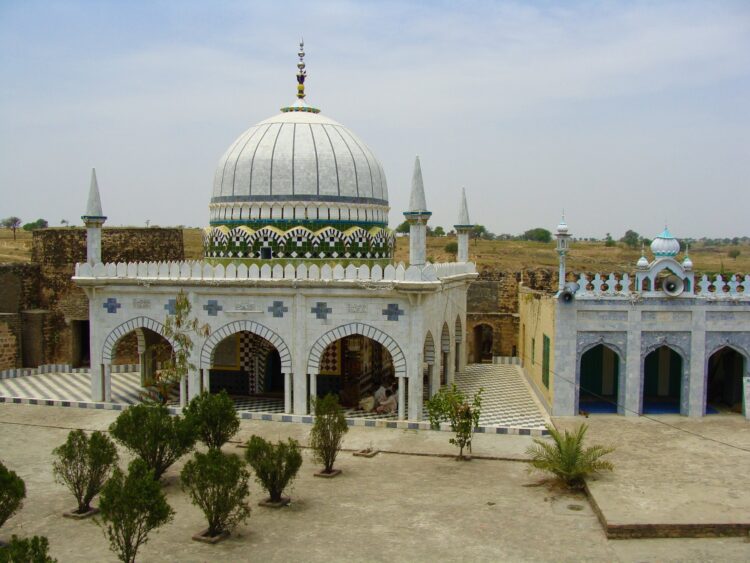
The shrine of Shaibzada Abdul Hakeem attracts hundreds of people every Thursday and Friday. Newly married couples invariably visit the shrine to get the blessings of the saint. People also slaughter animals at the shrine in the hope of getting their wishes fulfilled and as a form of thanksgiving to the saint.
The devotees also take a bath in the spring which is situated west of the fort and is believed to have been a miracle of the saint.
Local people believe that there was no spring in Sangni until the water came out from the earth where Sahibzada Abdul Hakeem was buried at the Sangni fortress. The spring never dries. Of the people taking a bath in it, some have illnesses that they hope the water will rid them of; water therapy is still a common practice at various shrines across the Pothohar region in Punjab.
_____________________
 Dr. Zulfiqar Ali Kalhoro, an anthropologist, has authored 12 books: ‘Symbols in Stone: The Rock Art of Sindh’, ‘Perspectives on the art and architecture of Sindh’, ‘Memorial Stones: Tharparkar’ and ‘Archaeology, Religion and Art in Sindh’. He may be contacted at: zulfi04@hotmail.com
Dr. Zulfiqar Ali Kalhoro, an anthropologist, has authored 12 books: ‘Symbols in Stone: The Rock Art of Sindh’, ‘Perspectives on the art and architecture of Sindh’, ‘Memorial Stones: Tharparkar’ and ‘Archaeology, Religion and Art in Sindh’. He may be contacted at: zulfi04@hotmail.com
Courtesy: The Friday Times Naya Daur Lahore